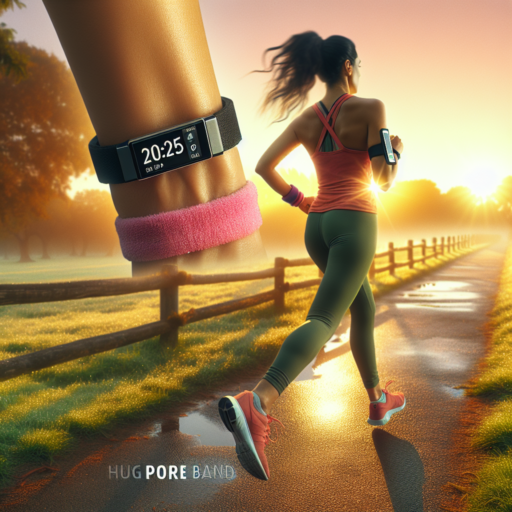Are arm heart rate monitors accurate?
When it comes to tracking heart rate, many fitness enthusiasts and athletes turn to arm heart rate monitors for convenience and continuous data. But the question of their accuracy is often raised. These devices, which can be worn on different parts of the arm, from the wrist to the upper arm, use optical sensors to measure the blood flow. This technology, while advanced, has both its proponents and critics.
One key factor in the accuracy of arm heart rate monitors is the fit and placement of the device. Manufacturers often emphasize the importance of wearing the monitor snugly against the skin, as too loose a fit can allow light to enter the sensor area, affecting the readings. Additionally, the specific area of the arm where the monitor is worn can impact its accuracy. For example, wrist-based monitors may experience more motion artifacts during vigorous activities, potentially leading to less accurate readings compared to those worn on the upper arm.
Environmental factors and individual differences also play a role in the accuracy of these monitors. Variables such as skin tone, tattoos, and even hair density can affect the sensor’s ability to accurately measure heart rate. Furthermore, the type of activity being performed while wearing the monitor can influence its precision. Static activities, such as running or cycling, may provide more accurate readings than complex movements like playing tennis or doing high-intensity interval training, which involve vigorous arm movement.
What is the most accurate wearable heart rate monitor?
When discussing the most accurate wearable heart rate monitor, it’s crucial to consider the array of devices available in the market that cater to varying needs and preferences. These monitors are essential tools for anyone looking to track their cardiovascular health, whether for fitness advancement, health monitoring, or even medical needs. Accuracy in these devices is paramount as it ensures users receive reliable data to make informed decisions about their health and fitness routines.
Optical heart rate monitors, which are commonly found in smartwatches and fitness bands, have become popular for their convenience and non-intrusive method of tracking. They use light to measure blood flow through the skin. However, while these devices offer great convenience and continuous monitoring, factors such as device placement and physical activity level can affect their accuracy. It’s important for users to wear these devices as directed, ensuring a snug fit to improve data precision.
Another notable mention in the quest for the most accurate heart rate monitoring is chest strap monitors. These devices measure electrical signals from the heart directly, providing data that is generally considered to be more accurate than their optical counterparts. This type of monitor is preferred by athletes and individuals engaged in high-intensity workouts due to its superior precision and responsiveness to rapid changes in heart rate. However, the requirement of wearing a strap around the chest may not appeal to everyone, despite its accuracy benefits.
- Optical Heart Rate Monitors: Ideal for everyday wear and moderate activity
- Chest Strap Monitors: Best choice for high-intensity workouts and athletes seeking precision
Where is the best place on your arm for a heart rate monitor?
When selecting the optimal position for a heart rate monitor on your arm, precision and comfort are paramount. The ideal location is typically just above the wrist, about two fingers’ width from the base of your palm. This area, known for its proximity to key blood vessels, facilitates the heart rate monitor’s ability to capture accurate readings. Ensuring the monitor is snug but not overly tight is crucial to maintain comfort and data precision.
Factors Affecting Placement
Certain factors might influence where you place your heart rate monitor for optimal performance. For example, individuals with smaller wrists might find it more comfortable to position the device slightly higher to avoid constriction or discomfort. Additionally, the design of the heart rate monitor itself can play a significant role in determining the most effective placement. Some models are specifically designed to be worn on narrower parts of the arm and may provide more accurate readings when aligned with the manufacturer’s recommendations.
Adjusting for Exercise Type
The type of exercise you engage in can also affect where the best place for your heart rate monitor on your arm might be. For activities that involve significant wrist movement, such as tennis or climbing, you might find it advantageous to wear the monitor a bit higher on your arm to prevent it from shifting. On the other hand, for activities like running or cycling, where the arm remains relatively stable, the standard position just above the wrist should suffice. Remember, the key is maintaining consistent, unobstructed contact between the sensor and your skin.
Ensuring your heart rate monitor is properly positioned is essential for gathering accurate data during your workouts. While the area just above the wrist is generally considered the best place for most individuals, don’t hesitate to adjust its position based on personal comfort, the specifics of your exercise routine, and the design of the device. Overall, the aim is to find a balance between comfort, accuracy, and convenience to maximize the benefits of your heart rate monitor during physical activity.
No se han encontrado productos.
Is a heart rate monitor worth it?
The question of whether a heart rate monitor is worth the investment depends on a variety of factors, including your fitness goals, health needs, and the type of physical activity you engage in. For individuals serious about their exercise regime, looking to maximize their workouts, or those monitoring health conditions, a heart rate monitor can be an invaluable tool.
Heart rate monitors offer the ability to track your heart rate in real-time, providing immediate feedback on the intensity of your workout. By understanding your heart rate zones, you can adjust your exercise intensity to stay within your target range, making your workouts more efficient. This can lead to improved cardiovascular fitness, more calories burned, and better management of workout intensity to avoid overtraining or undertraining.
Benefits of Using a Heart Rate Monitor
- Enhanced Workout Efficiency: Tailor your workouts to meet your fitness goals by staying within your ideal heart rate zone.
- Track Progress Over Time: Monitor improvements in your cardiovascular health and adjust workouts as your fitness level changes.
- Cardiovascular Health Monitoring: For those with health conditions or recovering from illness, heart rate monitors can offer peace of mind and vital data for healthcare providers.



